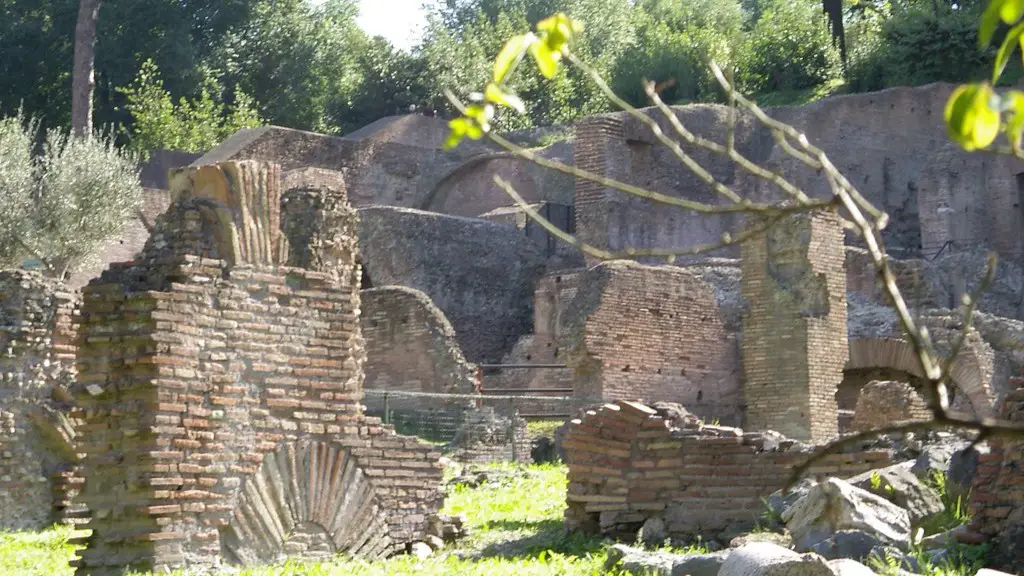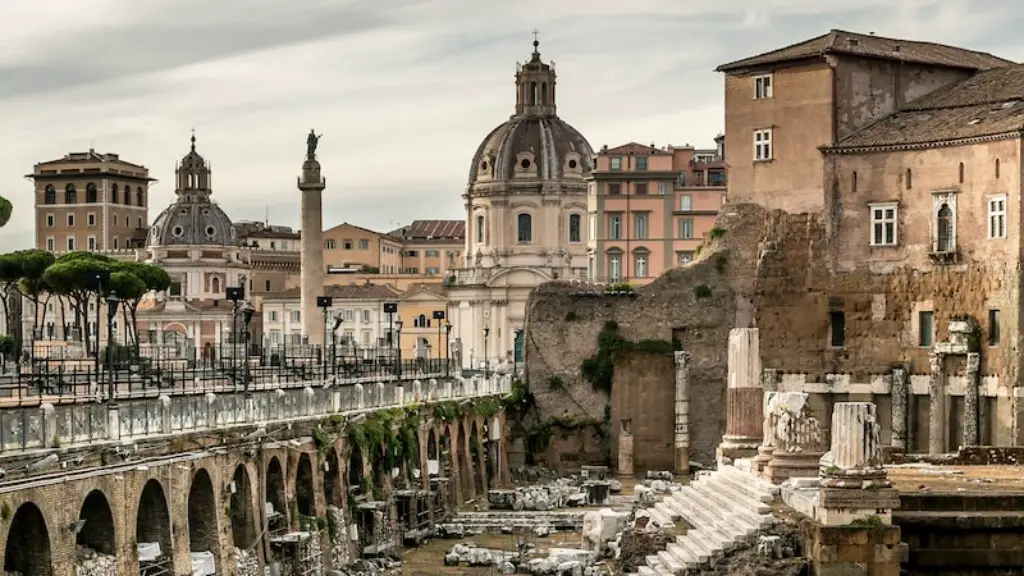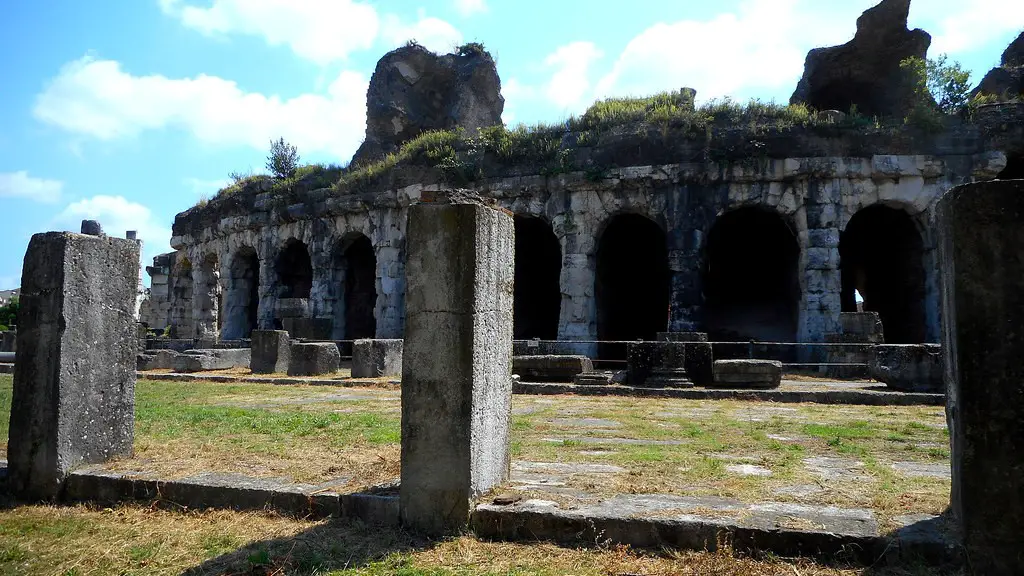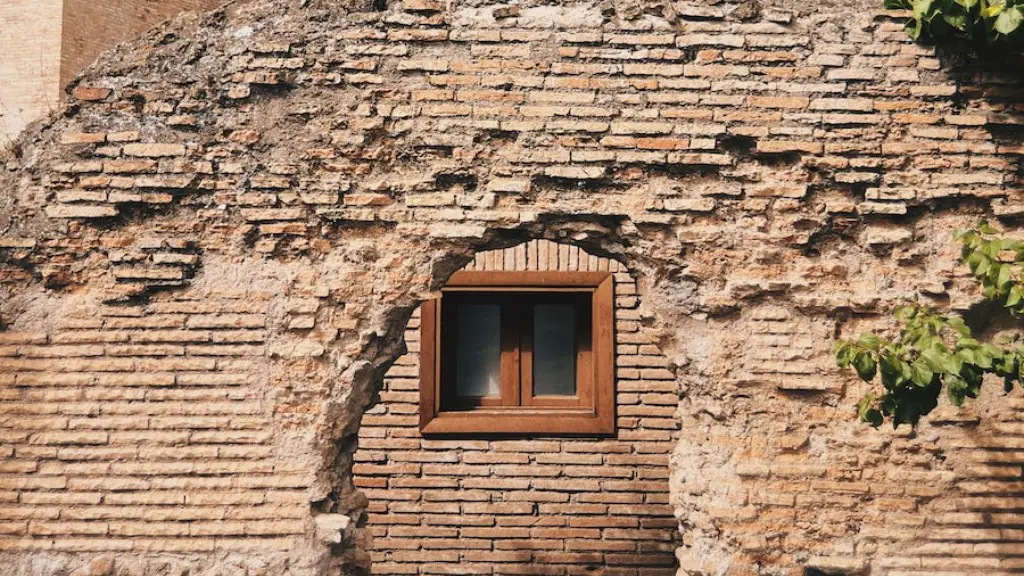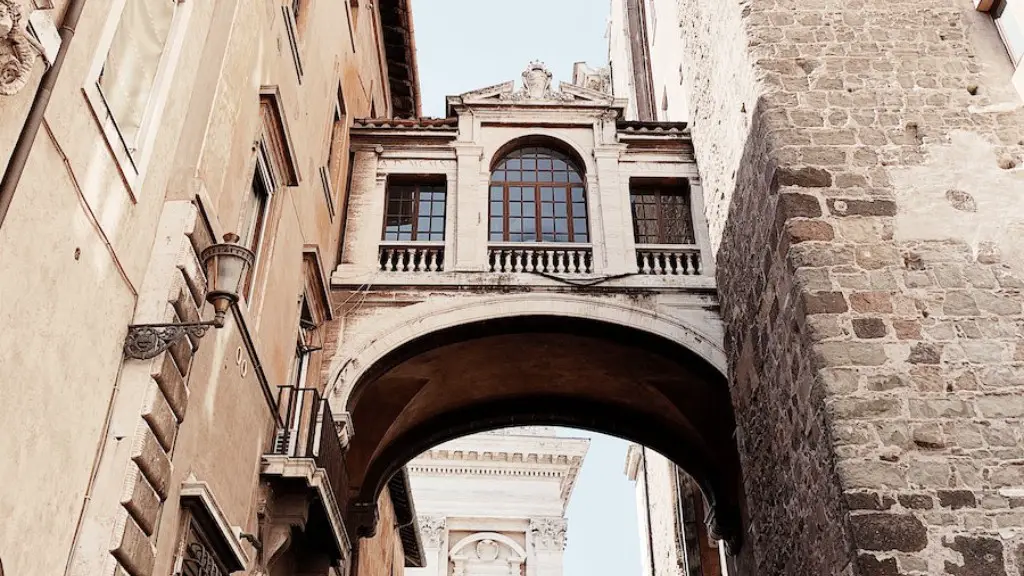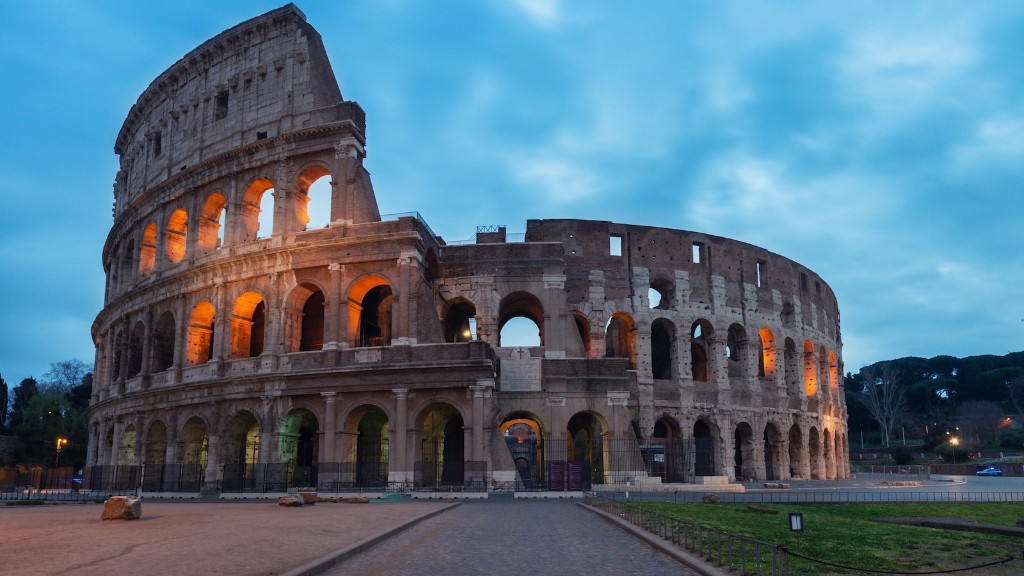Aqueducts were used in ancient Rome to transport water large distances. They were constructed of stone, brick, or concrete and were often underground. Some aqueducts were over 60 miles long! The Aqua Claudia and the Anio Novus were two of the largest and most famous aqueducts in Rome.
Aqueducts were a common sight in the Roman world and were used to transport water from one place to another. They were often used to bring water to cities and towns so that people could have access to clean water.
How did Romans use aqueducts?
Aqueducts are a system of channels and bridges that are used to transport water from a freshwater source to a city. Gravity and the natural slope of the land allow aqueducts to channel water from a lake or spring to a city. As water flows into the cities, it is used for drinking, irrigation, and to supply hundreds of public fountains and baths.
A cistern is a watertight container that is used to store water. The word “cistern” comes from the Latin word “cister,” which means “chest.” Cisterns were used by the ancient Romans to collect rainwater and water from aqueducts. When the water from an aqueduct reached the city, it would be stored in a cistern or distributing reservoir called a castellum.
How did Aqueduct helped develop Rome
The aqueducts were one of the most impressive feats of engineering accomplished by the ancient Romans. These gravity-fed water systems provided a reliable and abundant water supply for the cities, towns, and mines of the Roman Empire. The aqueducts also allowed for the development of public baths, latrines, fountains, and other public amenities that were vital to Roman society. In addition, aqueduct water was used to support the operations of mills, farms, and gardens.
Aqueducts have been an important part of water infrastructure for centuries. They are especially important in areas where there is limited access to fresh water sources. Aqueducts help to keep drinking water free of human waste and other contamination, which greatly improves public health in cities with primitive sewerage systems.
How did Roman aqueducts move water uphill?
A siphon is a pipe that is used to transport water from one location to another. It is typically used to span a valley or other body of water. The siphon is built underground and the water is allowed to flow through it. The water has enough momentum to make it uphill, which allows it to reach the other side of the valley.
Roman aqueducts were constructed with gravity in mind. The Romans used tools called groma, chorobates and dioptra to measure the lay of the land. This ensured that water would travel at the correct rate.
Why were the Roman aqueducts so important?
Aqueducts were an important part of Roman life, as they provided fresh water for drinking and bathing, as well as irrigation for farms. By carrying away used water and waste, aqueducts also helped to keep Romans healthy.
The Roman aqueducts are one of the most impressive feats of engineering from the ancient world. The Acqua Vergine is just one example of these awe-inspiring structures. Built in 19 BC, this aqueduct has been restored several times but is still in use today, bringing water to some of Rome’s fountains. It is a testimony to the skill of the Roman engineers who designed and built these amazing structures.
What are some facts about aqueducts in ancient Rome
The aqueducts of Rome were one of the most impressive feats of engineering of their time. They not only supplied the city with an unprecedented amount of clean water, but also allowed for the development of public baths and fountains, which were essential to Roman life. The aqueducts were so essential to the city that when Rome became an empire and spread across Europe, the Romans introduced aqueducts into their new colonies.
Aqueducts became an expression of power and wealth of a city. People living in the city benefited from having less polluted water that was not too far away from their living quarters. The city also became dependant on this type of water supply.
How fast did water flow in Roman aqueducts?
This research suggests that the ancient Roman aqueducts were not as efficient as previously thought. The study found that the flow rate was only 14 cubic meters per second, which is much lower than the traditional estimates. This means that the aqueducts were not able to transport as much water as was previously believed.
The lack of maintenance on Roman aqueducts led to many leaks, which in turn meant that the water inside the aqueducts was not always running. This led to a number of problems, including a decreased water supply and increased costs for repairing the aqueducts.
Why were Roman aqueducts above ground
The Roman aqueducts were built with a remarkable engineering feat. When the surface structure of the land was unable to accommodate underground tunnels, the aqueducts were built above ground. This allowed the aqueducts to go over, under or through any obstacle.
Aqueducts were one of the most impressive feats of engineering of the Roman Empire. They were built to transport water from lakes and rivers to cities and towns. Aqueducts were also used to transport other liquids, such as oil and wine.
There were 11 different aqueducts in the city of Rome alone. The aqueducts were constructed of stone, bricks and cement. They needed a huge amount of maintenance and relied on a downward slope.
The top 6 facts about Roman aqueducts are:
1. Romans built aqueducts from stone, bricks and cement.
2. They needed a huge amount of maintenance.
3. They relied on a downward slope.
4. The city of Rome alone had 11 different aqueducts.
5. Aqueducts were used to transport water, oil and wine.
6. They were one of the most impressive feats of engineering of the Roman Empire.
What was the construction technique of the aqueduct?
The cut and cover technique was the most popular method for building Roman aqueducts. This method was relatively easy and quick. First, a trench was dug or hewn. Then, a channel or pipe was laid down. Finally, the aqueduct was covered up. Many aqueducts were equipped with manholes to allow for maintenance and repairs.
The Roman love for water is evident in the eleven aqueducts that served the city and supplied over 15 million cubic yards of water per day. That’s an impressive 200 gallons of water per person, per day. The aqueducts were an amazing feat of engineering and helped to make Rome one of the most prosperous cities of its time.
Conclusion
Aqueducts were used in ancient Rome to bring water from aquifers and springs outside the city to public baths, fountains, and homes within the city.
Aqueducts were used in ancient Rome to bring water from outside the city to inside the city. This was a major engineering feat and allowed the city to grow and thrive. The aqueducts are still standing today and are a testament to the engineering skills of the Ancient Romans.
